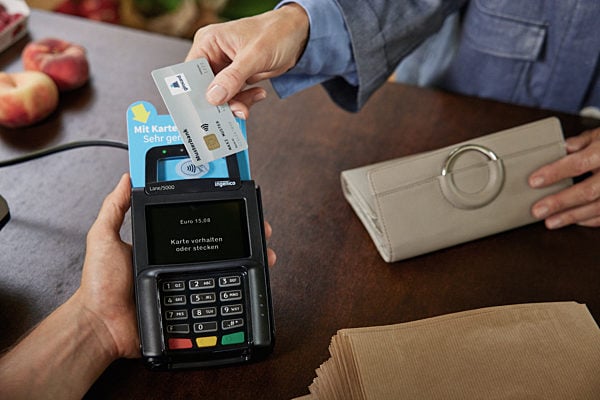A seven block walk down Čaka Street, one of the main thoroughfares in downtown Riga, leads past more than a dozen empty storefronts, all that remains of what used to be a bustling corridor of shops, cafes and other businesses. Perhaps every fourth or fifth commercial property is vacant.
The scene is similar in downtown side streets. Riga residents joke that the newest retail chain in Latvia, opening new locations every week, is called “Iznomā” (‘for rent’).
On Čaka Street, too, on the same seven blocks, there are three branch offices of Swedbank, one of Sweden’s largest banking groups.
As Latvia’s economy collapses, a large part of the blame, rightly or wrongly, has been placed on Swedish and Scandinavian banks and their allegedly reckless lending policies.
Swedbank, the dominant bank in the Baltic market, had made loans worth about 218 billion kronor ($23.8 billion) as of the end of 2008.
Swedbank also changed the name of its subsidiary bank in Latvian from Hansabanka to match the name of the parent just as the economic and financial crisis hit Latvia, giving Latvians an unambiguous clue as to who they could scapegoat.
Scandinavian bank lending is said to have fed a huge real estate bubble over the last few years that has now reversed into free fall. In the fourth quarter of 2008, Latvia’s GDP contracted by 10.4 percent from fourth quarter 2007, the sharpest drop among all European Union (EU) member states.
Minister of Transport Ainars Slesers, credited with bringing Norwegian retailers to Latvia as a private businessman during the 1990s, recently proposed that Latvia should declare a three-year moratorium on housing foreclosures in order to “send the bill” for Latvia’s troubles to the Swedish banks.
So far, the Latvian parliament, the Saeima, has not acted on this proposal and local media commentators have described it as thoughtless populism.
A Swedish television team came to town recently to research a planned documentary on Swedish banks and their connection to the economic troubles of all three Baltic countries.
They were looking for some examples of dubious advertising by Swedish-owned banks, but, unfortunately, the iconic commercial was produced for Icelandic-owned Norvik Bank.
It has a Latvian family – father, mother, two children in the back seat –pulling up in a nameless drive-in restaurant where the waiter takes orders for consumer loans instead of hamburgers. They order a flat screen TV, a doll house, a bicycle and, as an afterthought “a trip to Egypt” and the waiter arrives with paper cups filled with cash.
But in terms of outrageous outdoor advertising, the partly Swedish owned Nordea banking group probably takes the prize.
A few years ago, the bank set up some kind of a wind machine on a flatbed truck near the very center of Riga, within sight of the Freedom Monument, and created a small whirlwind of Latvian board game banknotes.
The ‘cash’ swirled around in a funnel several meters high in front of stunned and fascinated pedestrians. The message was not to miss out on the whirlwind of cash Nordea was offering the Latvian public.
Now the “real” whirlwind is being reaped on the Baltic real estate markets, with Swedbank CEO Jan Liden reportedly saying that the bank had made some mistakes in its lending policies, including mortgages, in the three Baltic States. Swedbank also reported that the percentage of bad loans in the region, while still low, had increased sharply.
For weeks, people on Latvian television talk shows and internet chat sites were accusing Swedish banks of contributing to the ruin of the Latvian economy. In a recent episode of the weekly discussion program Kas notiek Latvija? (‘What’s happening in Latvia?’), representatives of debtors’ associations accused Swedish banks of applying harsher and more discriminatory credit terms than they could use in Sweden. The charges, however, were levelled at banks attempting to revise the terms of existing loans as the financial crisis deepens rather than the original lending terms.
Foreign analysts based in Latvia say Swedish regulators and the Latvian government should bear the bulk of the blame for Latvia’s vulnerability to the global financial and economic crisis.
“Each bank did what was in its own interests. When (Swedish bank) SEB said it was slowing down lending, Nordea moved in. And they all came in because they could make money here. I don’t think the (main) responsibility is with the banks, but rather with those who had central oversight,” said Af Vanags, the British-Latvian director of the Baltic International Center for Economic Policy Studies (BICEPS) in Riga.
Morten Hansen, the head of the Economics Department at the Stockholm School of Economics in Riga (SSE Riga) says “the major blame, in my view, goes to the government, which was not willing to see the overheating of the economy as far back as 2007.”
In June, 2007, Lars Christiansen, chief analyst of Denmark’s Danske Bank told Latvian journalists that the economy was overheating, especially the housing and construction sectors. He caution that inflation would soar above 10 percent (it hit 17.9 percent in May 2008) and warned of pressures on the national currency, the lat, because of a large current account deficit.
In November 2008, the Latvian authorities were so nervous about the national currency that the Security Police briefly detained Dmitrijs Smirnovs, an economics instructor, for public comments expressing doubts about the banking system and questioned a musician for joking about banks during a concert intermission.
Both were suspected of violating a hastily adopted law forbidding rumour-mongering about the nation’s financial system. An investigation against the musician was ended with no charges filed, but Smirnovs remains under police scrutiny and is banned from traveling outside Latvia.
SSE Riga’s Hansen, a Dane, doesn’t consider Scandinavian banks blameless.
“It is amazing to what extent some banks were willing to lend, for instance, letting debt service take up to 70 percent of someone’s income. And nobody asked why everyone should be driving leased Porsches in one of the poorest countries in the EU,” he said.
Vanags added that, “lending decisions were not made by Swedes, but by our local people. The Swedes just watched the money roll in.”
The BICEPS director said he disagreed with alarmist forecasts that Eastern Europe’s debt to western European banks would cause a catastrophe.
“Eastern Europe is too small to be the straw that breaks the camel’s back,” he said, but acknowledged that reports of Latvia’s economic decline had hit hard at some Swedish bank shares, such as Swedbank.
Another Latvia-based foreign analyst, who didn’t want to be named, told of a meeting with some risk managers from Swedish banks who seemed rather clueless about local conditions.
“For instance, many people owned their apartments through post-Soviet privatization (for certificates issued by the government). They (when trading up to a new home) had never had any experience paying a mortgage,” the analyst said.
Swedish daily Svenska Dagbladet reports that the Swedbank, SEB and Nordea, the three wholly or substantially Swedish-owned banks dominating the Baltic markets have more than quadrupled their reserves against bad loans to 5.6 billion kronor for 2008 from 1.5 billion kronor for 2007.
New lending has ground to a halt and the volume of outstanding loans, some 500 billion kronor, was decreasing slightly, Svenska Dagbladet reported.
It quotes Union Bank of Switzerland (UBS) analyst Andreas Håkansson as saying that Swedish banks can probably absorb any losses from the Baltic countries as long as they remain profitable in the Swedish home market.
In Latvia and its neighbors, the question is whether what is a bone-shaking bump for a much larger and older financial system may not be a lethal back-breaker for local businesses and homeowners.
By Juris Kaza



 Please whitelist us to continue reading.
Please whitelist us to continue reading.